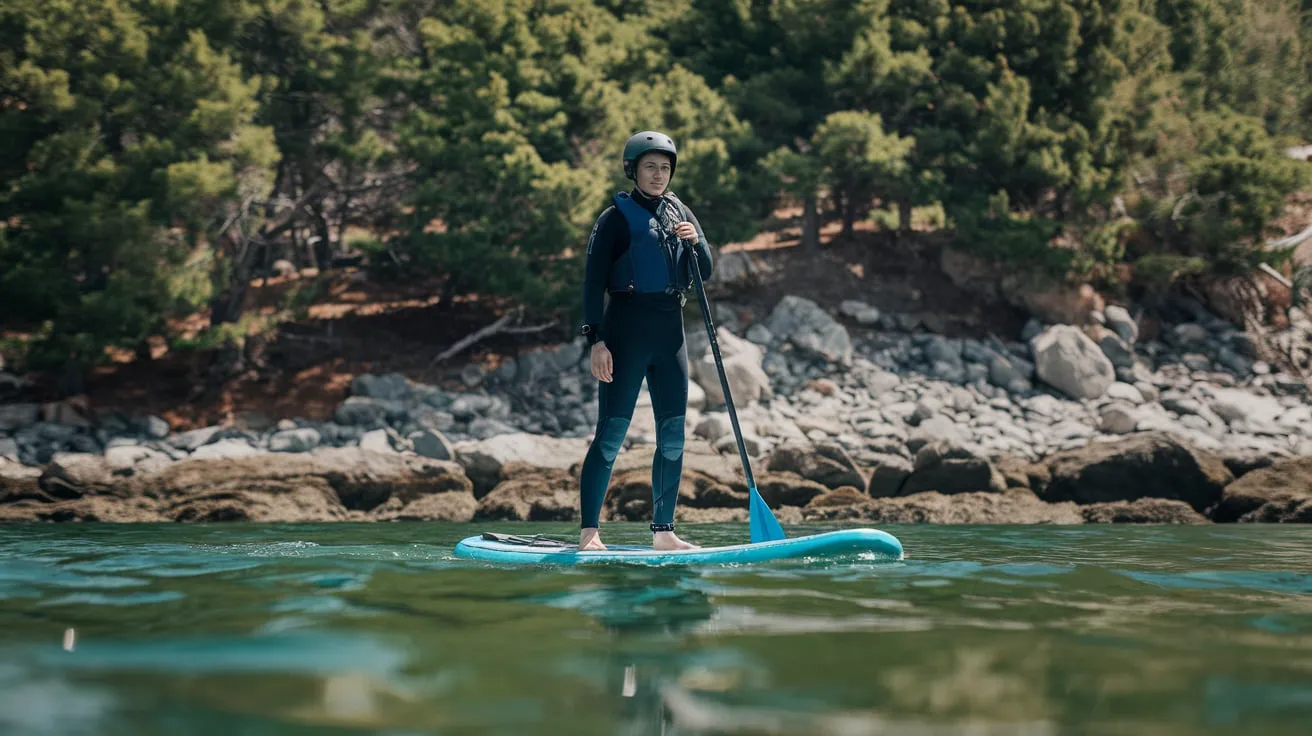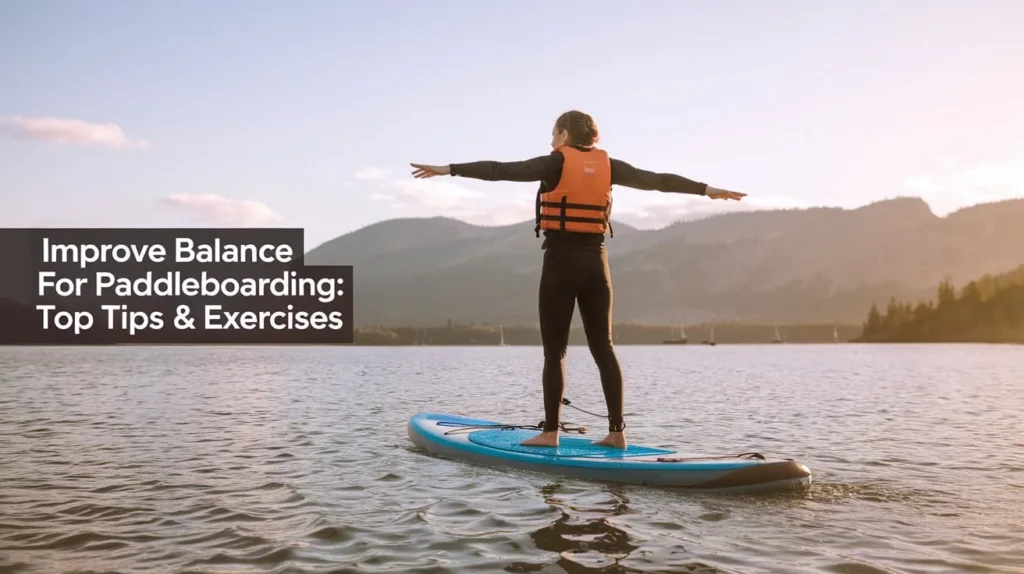How to Improve Balance for Stand-Up Paddleboarding
A great way to enjoy the water that combines leisure, fitness, and adventure is stand-up paddleboarding (SUP). However, maintaining your balance on a paddleboard can be challenging, especially for beginners. Improve Balance for Paddleboarding But don’t worry! With the right techniques and exercises, you can improve your balance and confidently glide across the water.
Essential Tips for SUP Balance
Understand Your Paddleboard
Before diving into exercises, it’s important to understand your paddleboard. The width, length, and design of your board play a significant role in your balance. Wider boards offer more stability, which is ideal for beginners, while narrower boards are more agile but require better balance. Learning the specifics of your board will allow you to customize your riding style.
Foot Placement and Posture
Proper foot placement is crucial for maintaining balance on your paddleboard. Stand with your feet parallel, approximately hip-width apart, and place them over the middle of the board. Keep your knees slightly bent to absorb any movement and maintain a relaxed, upright posture. Think of your legs as shock absorbers, allowing you to adjust to the water’s movements.
Use Your Paddle for Balance
Your paddle is more than just a tool for propulsion; it can also help you maintain balance. When you feel unstable, place the paddle in the water and use it as a third point of contact. This technique provides additional stability, much like using a walking stick on uneven terrain.
Core Exercises for Paddleboarding Stability
Core strength is the foundation of good balance, both on and off the water. Incorporating SUP training exercises that focus on your core will improve your overall stability and make you a more confident paddler.
Plank Variations
Planks are excellent for building core strength. Start with a conventional plank, maintaining the posture for 30 seconds to a minute. As you progress, try side planks or add leg lifts to engage different muscle groups.
Russian Twists
Sit on the floor with your knees bent and feet flat. Lean back slightly and hold a weight or paddle with both hands. Twist your torso from side to side, tapping the weight on the floor next to your hips. This exercise strengthens your obliques, which are essential for rotational stability on a paddleboard.
Read More: Top NBA Trades 2024: Winners, Losers, and Surprises

Balance Board Training
A balance board mimics the instability of a paddleboard, making it an effective tool for improving SUP balance. Spend a few minutes each day practicing different movements on the balance board to develop the muscles and reflexes needed for paddleboarding.
Beginner SUP Balance Guide
If you’re new to paddleboarding, start with basic techniques and exercises to build your confidence. Focus on keeping a steady posture, utilizing your paddle for balance, and practicing on calm seas. Remember, practice makes perfect, and as you gain experience, your balance will naturally improve.
Advanced Paddleboarding Techniques
For those looking to take their paddleboarding skills to the next level, advanced techniques like pivot turns and surfing waves require excellent balance. These techniques challenge your stability and require a strong core and quick reflexes. Practice these maneuvers in controlled environments before attempting them in rougher waters.
Balance Exercises for Stand-Up Paddleboarding
Single-Leg Stands
Standing on one leg improves your balance and develops the muscles surrounding your ankles and knees. Hold each leg for 30 seconds, gradually increasing the time as you get more comfortable. This exercise mimics the shifting balance needed on a paddleboard.
Yoga for SUP
Yoga is an excellent way to enhance your flexibility, core strength, and balance. Incorporate poses like the Warrior II and Tree Pose into your routine to improve your paddleboarding skills. Some yoga studios even offer SUP yoga classes, where you can practice on a paddleboard in a pool or calm water.
SUP Stability Tips
Consistency is key to improving SUP stability. Make sure to practice regularly, focusing on maintaining a relaxed posture and engaging your core muscles. Also, consider practicing in different conditions to adapt to various water movements.
People also ask
How to get better balance for paddle boarding?
Improve your balance for paddle boarding by practicing core-strengthening exercises and maintaining a low, steady stance on the board.
Why can’t I balance on my paddle board?
Difficulty balancing on a paddle board may be due to improper foot positioning, lack of core engagement, or rough water conditions.
How to stop wobbling on SUP?
To stop wobbling on a SUP, focus on evenly distributing your weight and keeping your gaze on the horizon.
How to make SUP more stable?
Conclusion
Improving your balance for paddleboarding doesn’t happen overnight, but with consistent practice and the right exercises, you’ll notice significant progress. Whether you’re a beginner or an advanced paddler, focusing on your core strength, proper techniques, and regular practice will make a world of difference in your SUP experience. So, get out there, enjoy the water, and paddle with confidence!
FAQs
1. What is the best way to improve balance for stand-up paddleboarding?
The greatest approach to develop balance is via constant practice and core-strengthening activities. Incorporating SUP training activities like planks and balance board training may dramatically boost your stability.
2. How long does it take to improve SUP balance?
The time it takes to improve balance varies for each person. With consistent practice, most individuals experience progress within a few weeks.
3. Can yoga help with paddleboarding balance?
Yes, yoga is highly effective for improving flexibility, core strength, and balance, all of which are crucial for paddleboarding.
4. Should I use a wider board to improve my balance?
Beginners may find it easier to balance on a wider board as it provides more stability. As your abilities develop, you may change to a narrower board for additional agility.
5. What are some advanced techniques to improve paddleboarding balance?
Advanced techniques like pivot turns and surfing waves challenge your balance and require strong core muscles and quick reflexes. Practice these in controlled environments before attempting them in rough waters.




